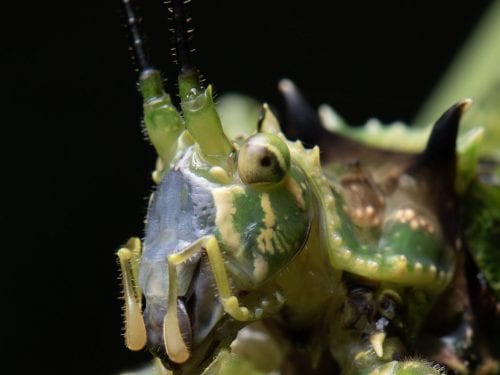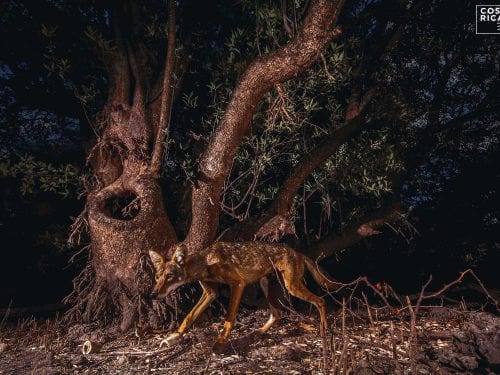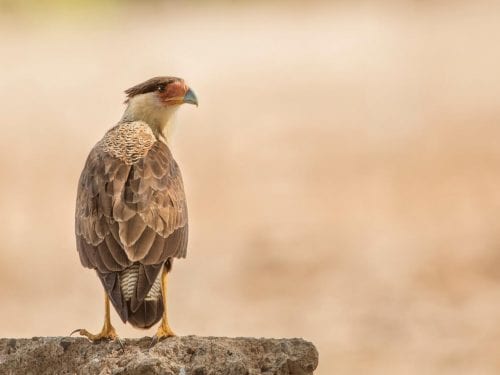
Three men walk along the dense forest trails of the Monte Alto Reserve in Hojancha. Their mission: to find the ideal places to set up four “traps.” It is September 15, during the time of year when water flow increases in the streams, and the tree branches block out every inch of the sky.
The “hunters” look for water sources and fruit trees, places where animals gather to feed. When they find the perfect spot for an ambush, they start setting up their equipment, although the only thing they can capture with it are images.
Vincent Losasso, a biologist with Guanacaste Wildlife Monitoring, is working on his most recent camera trap network project. Miguel Mendez, administrator for the area, and Alexis Obregon, one of his team members, go with him during the task.
The project goal is to install 24 sets of camera equipment in five protected areas in the province. Monte Alto is one of the selected areas.
For nine months, the cameras will record the forest fauna to create a database of Guanacaste species. “We are going to learn a little about the animals’ behavior and how populations can change over the course of the year,” says Losasso as he installs one of the cameras that are activated by a motion sensor and can stay in the field for months.

Vincent Losasso and Alexis Obregon place a camera in Las Orquideas, one of the five trails in the Monte Alto Protected Zone located in Hojancha. Animals use these paths as routes to pass through the area. Credit: César Arroyo CastroPhoto: César Arroyo Castro
The sites where the traps are installed are not always biological reserves. Guanacaste Wildlife Monitoring also works with developers who want to learn about the biodiversity present on their lands and make decisions based on this data.
All the videos that they can capture in the upcoming weeks will be a great help to Monte Alto.
“This generates important information for management of the protected wild area. For example, if we find a site that is a passage route for some mammals, such as felines, then we could regulate access to those sites a little so as not to alter the behavior of the species,” Miguel points out.
Learning to Protect
One of the biggest surprises for Vincent and Lindsay Losasso, founders of the project, was the great response from people on social media. Some of the videos that they have managed to put together with material from the cameras have received 55,000 likes.
It’s precisely to have this information not only in scientific journals, but to share it so people in general appreciate it.” Vincent Losasso, Guanacaste Wildlife Monitoring biologist.
Vincent believes that people’s fascination with seeing animals in their natural habitat is due to how difficult it is to observe them because of their behavior patterns or camouflage.
“Our main purpose is to share the wildlife that this country has to offer and that hardly anyone gets to see. Even if you spend a lot of time in the forest, you won’t have any idea of the amount of biodiversity that is here,” the biologist added.

Alexis Obregon, a Forestry Engineering student and a member of the Monte Alto Protected Zone team, installs a camera trap near a ravine where they have observed tracks of coyotes, coatis, and agoutis. Credit: César Arroyo CastroPhoto: César Arroyo Castro
The project also aims to work on education. Schools and organized groups in the province have camera traps installed in their communities in order to involve children in conservation and technology.
A professor from the United States donated one of the cameras installed on September 15 so that he and his students together can examine how the wildlife that the lens manages to capture behaves.
“We want to inspire the next generation of biologists,” the Losassos reveal on their social networks.
There is a project initiative to raise money to buy more camera traps and install them in more conservation areas in Guanacaste. If you want to contribute, you can visit this link.







Comments